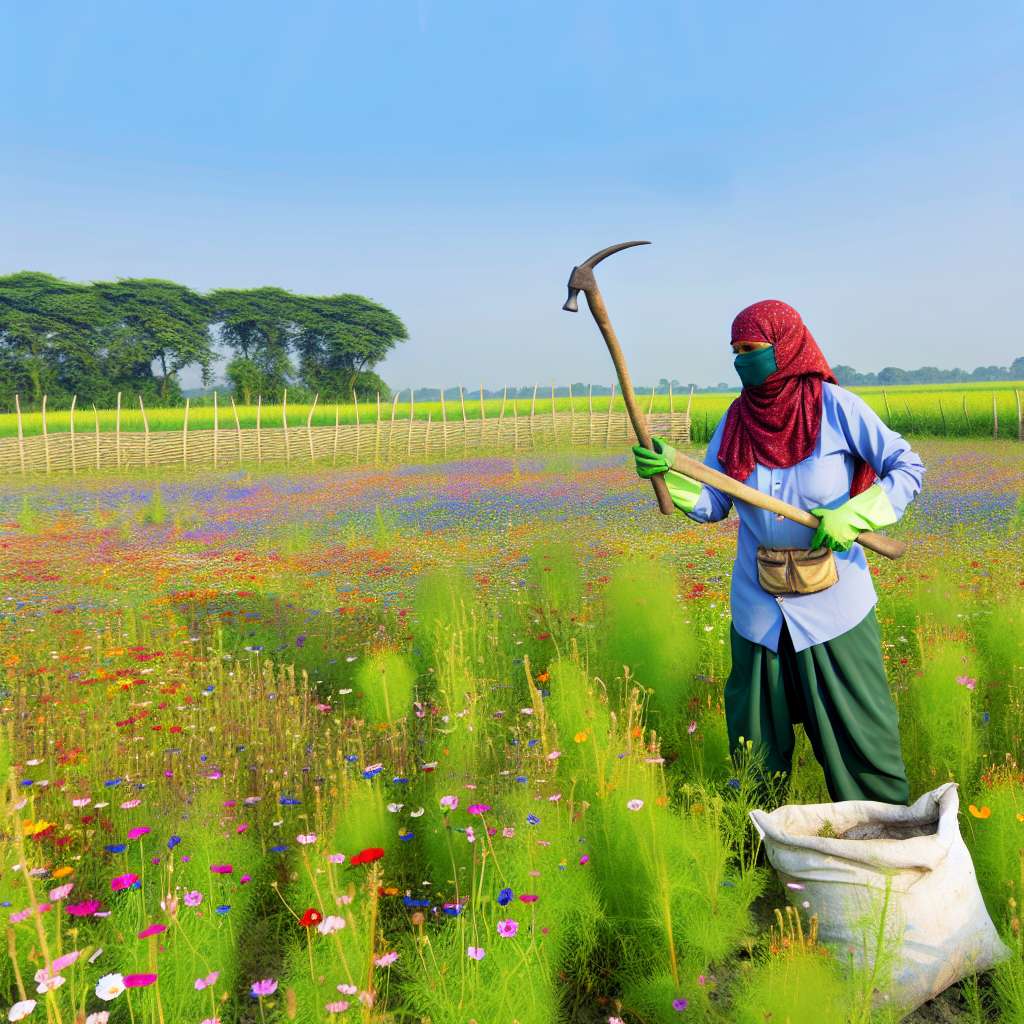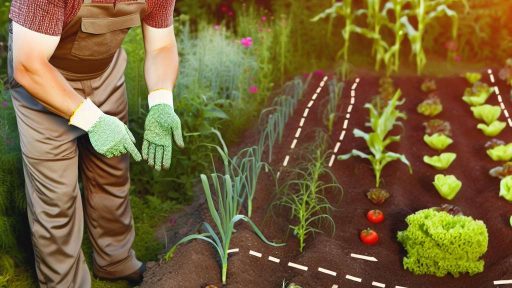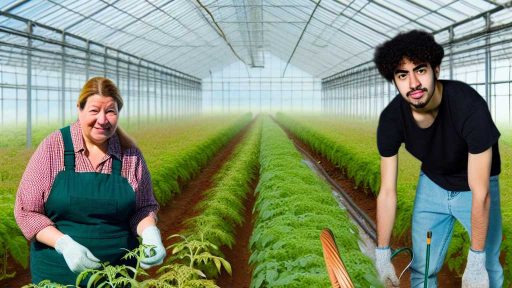Understanding the Importance of Wild Bees in Agriculture
Role of Wild Bees in Pollination
Wild bees are essential for agricultural pollination.
They significantly enhance crop yields through effective pollination.
Particularly, they contribute to the reproduction of flowering plants.
This leads to increased food production for both humans and wildlife.
Diversity of Wild Bee Species
Various wild bee species exist, each with unique pollination behaviors.
Solitary bees tend to visit more flowers than honeybees.
This behavior results in improved pollination efficiency.
Additionally, many wild bees are active in different weather conditions.
This trait allows them to pollinate when honeybees cannot.
Economic Benefits of Wild Bees
Wild bees provide significant economic benefits to farmers.
They enhance fruit and vegetable quality through effective pollination.
Research indicates that wild bee populations can reduce reliance on honeybees.
This can lower the costs associated with beekeeping and hive management.
Contributions to Biodiversity
Wild bees play a crucial role in maintaining biodiversity.
Pollination supports diverse plant populations across ecosystems.
Transform Your Agribusiness
Unlock your farm's potential with expert advice tailored to your needs. Get actionable steps that drive real results.
Get StartedThis, in turn, benefits various animal species dependent on these plants.
Healthy ecosystems contribute to overall agricultural resilience.
Wild bees are vital for sustainable agriculture.
Choosing Native Plants that Attract Wild Bees
Importance of Native Plants
Native plants are essential for attracting wild bees.
They thrive in local conditions and require less maintenance.
Moreover, native plants foster a balanced ecosystem.
Selecting the Right Plants
Choose plants that bloom at different times throughout the season.
This ensures a consistent food supply for bees.
Include a variety of flower shapes and colors to attract diverse bee species.
Some popular native plants include echinacea, milkweed, and bee balm.
Creating a Pollinator-Friendly Habitat
Design a garden that offers shelter and nesting sites.
Leave areas of bare soil for ground-nesting bees.
In addition, provide tall grasses and brush piles for shelter.
Implementing Best Practices
Minimize pesticide use to protect bees from harmful chemicals.
Create designated zones in your garden for diverse flowering plants.
Consider establishing wildflower strips along your farm boundaries.
Finally, educate others about the importance of bees and native plants.
Creating a Bee-Friendly Habitat on Your Farm
Understanding the Importance of Wild Bees
Wild bees play a crucial role in pollination.
They enhance crop yields and improve fruit quality.
Additionally, they support a healthy ecosystem on your farm.
Planting Native Flowers
Native flowers attract local bee species effectively.
Choose a variety of flowers that bloom at different times.
This ensures a continuous source of nectar and pollen.
- Bluebells
- Echinacea
- Goldenrod
- Milkweed
Creating Natural Nesting Sites
Wild bees need safe places to nest.
Showcase Your Farming Business
Publish your professional farming services profile on our blog for a one-time fee of $200 and reach a dedicated audience of farmers and agribusiness owners.
Publish Your ProfileLeave some areas of bare ground exposed.
Additionally, consider building bee hotels.
These reproduction sites can host solitary bee species.
Reducing Pesticide Use
Pesticides can harm beneficial bee populations.
Opt for natural pest control methods instead.
Introduce beneficial insects like ladybugs and lacewings.
This can maintain healthy crops while protecting bees.
Providing Water Sources
Bees need water to survive, especially in hot weather.
Create shallow basins filled with water.
Add stones or pebbles for bees to land on safely.
This small effort can support their hydration needs.
Encouraging Community Awareness
Engage your community in bee conservation efforts.
Host workshops or informational sessions.
Share the importance of wild bees for local agriculture.
- Discuss pollinator-friendly practices.
- Organize community planting days.
- Involve schools in educational projects.
Find Out More: Small Livestock Management for Maximizing Land Efficiency
Implementing Pesticide Management Practices to Protect Wild Bees
Understanding the Importance of Wild Bees
Wild bees play a critical role in pollinating crops.
They enhance biodiversity and contribute to ecosystem health.
Moreover, their decline poses risks to food security.
Using Integrated Pest Management
Integrated pest management (IPM) reduces reliance on chemical pesticides.
First, identify pests accurately to determine if intervention is necessary.
Next, monitor pest levels regularly to ensure timely management.
Additionally, combine cultural, biological, and mechanical controls with chemical options as needed.
Selecting Bee-Friendly Pesticides
Choose pesticides that are less harmful to pollinators.
Prioritize products labeled as “bee-safe” or “pollinator-friendly.”
Always check for specific application guidelines to minimize exposure.
Timing Pesticide Applications
Timing your pesticide applications can mitigate harm to bees.
Apply chemicals during late evening or early morning hours.
Avoid spraying when flowers are in full bloom.
This approach allows bees to forage safely without exposure.
Providing Pesticide-Free Zones
Designate pesticide-free areas on your farm to protect bees.
These areas can serve as refuge zones during spraying activities.
Planting wildflowers in these zones enhances bee habitats.
Educating Farm Workers
Training farm workers about the importance of wild bees is essential.
Inform them about pesticide impact and safe handling practices.
Additionally, encourage reporting bee activity to promptly address concerns.
Monitoring Bee Populations
Track local bee populations to assess health and activity levels.
Consider collaborating with local conservation groups for assistance.
Maintaining data helps in making informed management decisions.
Delve into the Subject: How Beekeeping Contributes to Sustainable Agriculture in the USA
Designing Pollinator Gardens with Essential Features for Bees
Choosing the Right Plants
Select native plants to attract local bee species.
Showcase Your Farming Business
Publish your professional farming services profile on our blog for a one-time fee of $200 and reach a dedicated audience of farmers and agribusiness owners.
Publish Your ProfileThey provide food sources that bees recognize.
Include a variety of flowering plants for diverse diets.
Opt for plants that bloom at different times.
This ensures a continuous supply of nectar and pollen.
Creating a Bee-Friendly Environment
Design your garden to have sunny spots for bees to rest.
Provide sheltered areas to protect them from harsh weather.
Add water sources like shallow dishes filled with stones.
This gives bees a safe place to drink without drowning.
Building Nesting Habitats
Include nesting sites for solitary bees in your garden.
Leave areas of bare soil for ground-nesting bees.
Install bee hotels to attract cavity-nesting species.
Ensure these habitats are well positioned and safe from predators.
Avoiding Pesticides and Chemicals
Minimize or eliminate pesticide use in your garden.
Opt for organic pest control methods when necessary.
Educate yourself on bee-friendly practices to promote their health.
Encouraging Community Involvement
Engage neighbors in creating shared pollinator gardens.
Host workshops on the importance of bees and biodiversity.
Collectively create spaces that benefit the environment.
Promote awareness of the critical role bees play in agriculture.
Explore Further: DIY Garden Projects for Homesteading Beginners

Scheduling Blooming Times to Ensure Continuous Forage for Bees
Understanding Blooming Schedules
Blooming schedules play a vital role in attracting wild bees.
Different plants bloom at various times throughout the year.
By coordinating these blooms, you can provide a steady food source.
This approach keeps pollinators active and thriving.
Choosing the Right Plants
Select a diverse array of flowering plants for your farm.
Focus on native species as they are more appealing to local bees.
Additionally, incorporate plants that bloom in succession.
This ensures flowers are available during all growing seasons.
Creating a Blooming Calendar
A blooming calendar helps track when each plant flowers.
Start by identifying the flowering periods of your chosen plants.
Organize them into a calendar format for easy reference.
This allows you to visualize the continuous blooming timeline.
Implementing Crop Rotation
Crop rotation supports soil health and enhances biodiversity.
Plan rotations that consider the blooming times of your crops.
This strategy allows different plants to provide nectar throughout the season.
Consequently, it creates a healthy habitat for wild bees.
Encouraging Overlap of Blooming Times
Look for plant combinations that flower concurrently.
This overlap increases food availability at peak bee activity times.
Examples include pairing clover with wildflowers for variety.
This diversity helps sustain bee populations throughout the season.
Showcase Your Farming Business
Publish your professional farming services profile on our blog for a one-time fee of $200 and reach a dedicated audience of farmers and agribusiness owners.
Publish Your ProfileMonitoring and Adjusting the Plan
Regularly monitor the effectiveness of your blooming schedule.
Observe which plants attract the most bee activity.
Be prepared to make adjustments based on bee preferences.
This strategy helps optimize your farm’s pollination efficiency.
Explore Further: Step-By-Step DIY Garden Projects To Enhance Soil Health For Farming In The USA
Educating Your Community on the Benefits of Wild Bee Conservation
Understanding the Importance of Wild Bees
Wild bees play a crucial role in pollination.
They help increase crop yields and enhance fruit quality.
Moreover, wild bee populations contribute to ecosystem stability.
Benefits to Farmers
Educating farmers on wild bee conservation boosts crop diversity.
Farmers can achieve better pollination without extensive costs.
Additionally, healthy bee populations reduce the need for chemicals.
Community Engagement
Engaging local communities fosters a shared commitment to conservation.
Organizing workshops can spread awareness about bee habitats.
Community members can learn how to create bee-friendly environments.
Creating Educational Resources
Develop brochures outlining the benefits of wild bees.
Utilize social media to share valuable information with a wider audience.
Host informational sessions to discuss conservation strategies.
Collaborating with Local Organizations
Partnering with local environmental groups can enhance outreach.
Collaborations can lead to stronger conservation initiatives.
Joint efforts often attract more resources and volunteers.
Implementing Pollinator-Friendly Practices
Encourage practices like planting native wildflowers.
Promote the use of organic farming methods.
These actions support bees and their environments effectively.
Monitoring and Evaluating Wild Bee Populations on Your Farm
Importance of Wild Bees
Wild bees play a critical role in pollination.
Their activities significantly enhance crop yields.
Furthermore, they support the overall health of ecosystems.
Setting Up Monitoring Systems
Establish a regular monitoring schedule to track bee populations.
Use a combination of visual observations and bee traps.
Document the different species you encounter.
This information will help you understand population trends.
Choosing Observation Sites
Select diverse habitats across your farm for monitoring.
Look for areas with native flowering plants and minimal disturbance.
Pay attention to edge habitats as they often attract bees.
Assessing Bee Diversity
Diversity in bee populations leads to better pollination.
Identify the different species present on your farm.
Record their activity patterns and nesting behaviors.
This data provides insight into the effectiveness of your management strategies.
Using Technology for Monitoring
Consider utilizing mobile apps to log your observations.
Camera traps can capture images of bees in action.
Data collection technology facilitates detailed analysis over time.
Showcase Your Farming Business
Publish your professional farming services profile on our blog for a one-time fee of $200 and reach a dedicated audience of farmers and agribusiness owners.
Publish Your ProfileSurvey Techniques
Conduct regular bee surveys to gauge population health.
Use nets for catching and identifying species in the field.
Alternatively, set up flowering plots and observe visiting bee species.
Evaluating Pollination Efficiency
Analyze the correlation between bee activity and crop yields.
Conduct controlled experiments to assess pollination impact.
Monitor fruit and seed set rates in relation to bee abundance.
Engaging with Local Experts
Collaborate with local entomologists or agricultural extension agents.
Participation in workshops can enhance your monitoring skills.
Networking with peers also gives access to valuable resources.
Adapting Management Practices
Use your monitoring results to inform farm management decisions.
Adjust cultivars based on bee activity and preferences.
Implement practices that support both wild bees and crop health.
Additional Resources
Attracting Pollinators into the Garden – Floret Flowers
Attracting Pollinators to the Garden — The Wine Box Gardener




